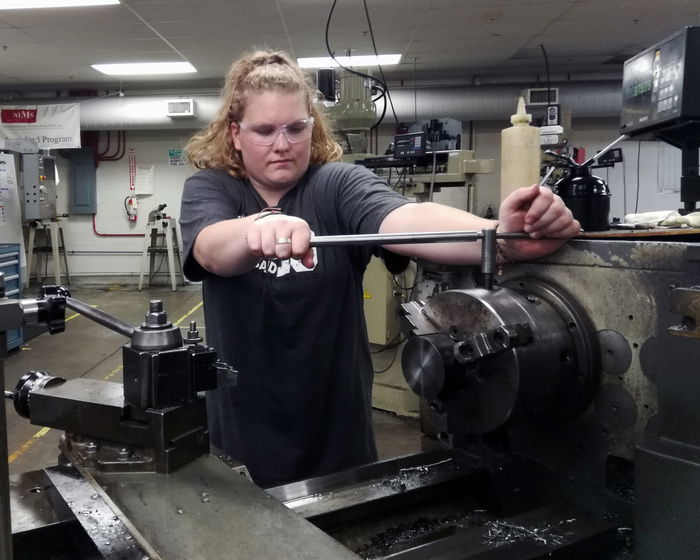
5 Ways States Can Put Americans Back to Work and Transform Higher Education
December 16, 2020
At A Glance
Drawing on their experiences as community college leaders, JFF’s Policy Leadership Trust urges state policymakers to invest in bold strategies that will propel more people off the economic sidelines and into skill-building that leads to quality jobs and careers.
It’s tempting these days to believe that once COVID-19 is contained, the U.S. economy will bounce back quickly, replenishing jobs and incomes lost in the pandemic. Yet there is an early warning sign that when the labor market fully reopens, some high-demand jobs may be hard to fill even with millions of Americans looking for work.
This fall, hundreds of thousands of people delayed—or gave up on—their plans to pursue postsecondary education and training, according to an analysis of new national data.
Typically, college enrollment rises during an economic recession, especially among out-of-work adults who need to polish their skills to get a leg up in the job market. Yet, despite a record spike in unemployment and a broadly held view among working-age Americans that more education and training will help them get a good job, the number of people—both young and old—pursuing a postsecondary credential or degree sharply decreased this fall, and community college enrollment is down an estimated 10 percent.
Continuous upskilling and reskilling are essential in our rapidly changing economy, which is experiencing an accelerated shift to automation, a shrinking half-life of professional skills, and growing demand for uniquely human skills. This looming mismatch between the skills that workers have and the skills that employers need could ultimately curtail economic growth and career opportunities for years to come.
*Community college enrollment is down an estimated 10 percent.*
To address this worrisome trend, colleges and universities must push forward with demand-driven innovations to become more responsive and relevant to the changing world of work and the changing needs of learners. But higher education cannot do this work alone. Policymakers must take bold action to foster the innovation at scale that will transform outdated higher ed systems. With the nation’s capital embroiled in partisanship and gridlock, it is up to the states to lead these efforts by making common-sense investments and policy reforms.
Facing steep shortfalls in state revenues, state policymakers are in a difficult spot and may think it only fair to make across-the-board cuts. This would be a mistake, as it proved to be during the Great Recession, when states slashed funding for colleges and need-based financial aid just as a rising number of unemployed and cash-strapped Americans needed to upgrade their skills. This time around, states should target their precious resources more wisely.
A national group of postsecondary leaders convened by JFF, the Policy Leadership Trust urges state policymakers to focus on community and technical colleges—and their learners. These public two-year institutions, which serve a large number of low-income, Black, Latinx, and Indigenous learners, have suffered the steepest declines in enrollment this fall. Investing in these critical institutions would help ensure equitable access to skills development and high-quality career-focused programs that are key to the nation recovering from the COVID-19 crisis.
Five Strategies for Making College More Responsive and Relevant
The Trust has been taking a close look at what our community colleges can—and must—do to propel more people off the economic sidelines and into skill-building that leads to quality jobs and careers. During our national reckoning on race, we also recognize that our institutions must take urgent action to dismantle campus structures that breed disparities and to intentionally redesign for equity.
Based on the priorities that students and employers have expressed in recent national surveys, as well as empirical evidence and our practical experiences of what’s working during the pandemic, we have landed on five key strategies. Here’s what community colleges—with the critical support of state funding and policy reforms—should do now to help more Americans get the postsecondary credentials and skills they need to get back to work and advance economically:
- Provide people with the in-demand skills they need to get a job and advance their careers. Expand short-term training opportunities and ensure that the training is affordable and of high quality and fulfills degree requirements.
- Ensure that learning is accessible anywhere and at any time. Address digital disparities in access to remote instruction, improve online learning experiences, and remove barriers to competency-based and accelerated education models.
- Remove financial hurdles to college enrollment and completion. Cover tuition and emergency expenses for low-income learners so that, in an uncertain time, they can count on being able to complete college.
- Help people earn while they learn. Bolster college and employer partnerships in apprenticeship, work-study, and other work-based learning experiences that connect education and career goals.
- Strengthen on-ramps to college. Ensure that student populations that have been historically underserved or deemed not ready for postsecondary education have equitable access to college-in-high-school experiences and sufficient supports to succeed in essential coursework. Completing first-year math and English courses, for example, are proven to create early momentum toward credential attainment.
Equity Gaps Growing in College Access
While undergraduate enrollment was down across the board this fall, the steepest and most unsettling drops were among low-income learners and people of color—and at community colleges, which provide the most affordable paths to skills and jobs. These stark disparities are clear in enrollment data collected by the National Student Clearinghouse and in household surveys conducted by the U.S. Census Bureau.
Consider the following enrollment figures, which are current as of December 15.
At two-year vs. four-year colleges:
- Community college enrollment is down 10 percent since the fall of 2019, compared to a modest 2 percent drop at public four-year institutions.
- Some 40 percent of U.S. households report a prospective student cancelling plans to attend a community college—more than double the cancellation rate of four-year college students.
Among new students, young and old:
- Among students who graduated from high school in 2020, postsecondary enrollment was 22 percent lower than it was for members of the class of 2019.
- The share of older adults (ages 30 and over) enrolling in college for the first time declined 24 percent—compared with a 12 percent drop among traditional-age new students (ages 18-20).
Among learners from low-income vs. wealthy households:
- About 48 percent of people from low-income households (earning less than $35,000 per year) canceled their education plans—nearly double the 26 percent rate of people from wealthy households (earning more than $100,000 per year).
- For members of the high school graduating class of 2020, postsecondary enrollment plunged the most among students in high-poverty, low-income, and urban high schools.
Among college students who are Black, Indigenous, or other people of color:
- Community college enrollment fell 20 percent among Black and Indigenous men.
- Among all undergraduates, Native American students saw the sharpest decline (9.6 percent), followed by Black students (7.5 percent) and white students (6.6 percent).
- Hispanic students were the only racial or ethnic group whose undergraduate enrollment rate increased in 2019, but their overall undergraduate enrollment rate has fallen 5.4 percent this year, largely due to sharp decreases at community colleges.

Turn the Crisis Into an Opportunity to Make Big Changes
Implementing the five recommended strategies would address what the Policy Leadership Trust believes has been ailing our nation’s approach to public higher education for quite some time. Truth be told, overall enrollment in community colleges has been declining since the Great Recession, especially among adults. Meanwhile, public higher education is losing market share to a crowded, competitive landscape of for-profit education providers and corporate training platforms. Moreover, technological advances are disrupting many of higher ed’s arcane tools and processes, including textbooks, credit transcripts, and inadequate career services.
In this brief video, Policy Leadership Trust member Randall VanWagoner describes these consequential trends and offers ideas on how higher education must evolve to remain relevant and responsive. VanWagoner, who is president of Mohawk Valley Community College in New York, recorded these remarks before the pandemic, but they have even more resonance today. In many respects, COVID-19 has served as an automation-forcing event for the economy and is spurring even greater disruption to the higher education sector.
*With the nation’s capital embroiled in partisanship and seemingly endless gridlock, it is up to the states to push forward by making common-sense reforms and targeted investments.*
If more states and community colleges adopt our five strategies, the nation would be able to help more people acquire the new skills and credentials that they need for work, and our nation’s postsecondary education system would be on the path to modernization and the ability to provide equitable opportunity for all students.
In a series of briefs, the Policy Leadership Trust will dive into why each of these five issues matter for an equitable economic recovery, what progress community colleges have made to address the issues, and what state policymakers should do to scale and sustain these efforts. The first brief—Short-Term Training—is available here.
Even though they face budgetary constraints, states must take bold action now by prioritizing resources for what matters most and by overhauling legacy policies and structures to spur innovation. Our nation’s learners, workers, and employers are counting on policymakers and colleges themselves to shore up the talent development pipeline that is breaking under the pressure of the pandemic.
Related Content

Policy & Advocacy
Advancing evidence-based policy for education and the workforce. Nearly half of U.S. workers are in low-paying jobs. Systemic issues in education, employment, and workforce development prevent millions of people from advancing economically and threaten our…


